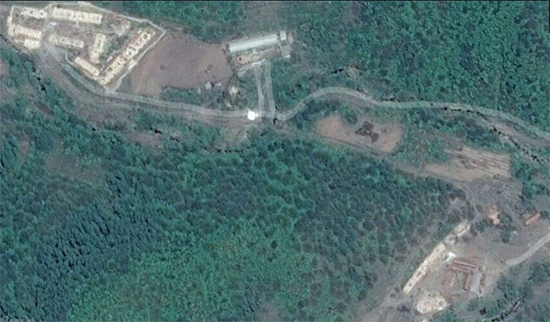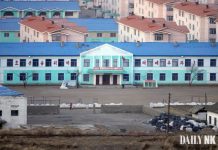
Detainees held until recently at
North Korea’s notorious political prison camp in Yodeok County have been
moved to two alternate camps, an inside source from North Hamkyung Province has alleged to Daily NK.
“That political prison
camp that used to be in Yodeok County in South Hamkyung has already been broken
up. There’s not a trace of it left,” the source, who is with the military in the northerly province, claimed in conversation with Daily NK on the 7th. However, the disbanding of Camp 15 does not seem to have brought liberty for many of its inmates. According to the same
source, “The political prisoners who were there have been divided up and moved
to camps 14 and 16.”
Camp 16 is in northerly Myeonggan (formerly Hwasong) County, North Hamkyung Province. Camp 14 (Kaecheon), which is further west in South Pyongan Province, is infamous for having been the home of defector-activist Shin Dong
Hyuk.
“It seems that closing Camp 15 was the next
step after they closed Camp 22 at Hoeryong in June 2012,” the source went on to propose.
“The majority of the buildings and facilities they used have been razed.”
However, he was not able to say exactly when the closure may have taken place, or when
the process of moving the prisoners was completed. “The
transportation up to Camp 15 is in a remote mountainous region so it is totally cut off from ordinary residents,” he offered by way of explanation.
Unlike North Korea’s other political prison
camps, the camp at Yodeok was divided into “Revolutionizing” (see image above. Image: Google Earth) and “Completely
Controlled” zones. Persons charged with relatively minor offenses were imprisoned
in the former area, wherein whole families were able to live together. Those
accused of grave offenses were detained in the latter area of the camp. However, the source said that it was also possible for inmates to be sent out of the Completely Controlled Zone to serve time in the Revolutionizing Zone,
while there were also some cases of prisoners being released after finishing their sentences.
“The residents of the Revolutionizing Zone
are mostly the families of minor criminals, and right now they appear to be right
where they were before,” he said. Since they don’t have freedom of movement without the express permission of the State Security
Department, such families can’t even move to different regions, much less visit distant relatives.
“When they closed down Camp 22 two years
ago, there was word of mouth among locals and some collective farms moved in
there, so in the end word about it spread pretty quickly,” the source explained. “However, all the buildings and
facilities over at Yodeok have been demolished and the whole area is still
under the control of State Security, so nobody really knows when the prisoners
were moved.”
It is widely believed that the goal of the
North Korean authorities in closing down Yodeok is to allow international
observers to visit the site in order to popularize the notion that “North Korea
doesn’t have any political prison camps.” In keeping with this hypothesis, Pyongyang recently granted permission
for the UN’s point man on North Korean human rights, Marzuki Darusman, to visit
the country, and made a video casting doubt upon the testimony of Shin Dong Hyuk through his father.
Meanwhile, on October 28th the NIS, South Korea’s state intelligence agency, reported to the National Assembly
that a prison camp at
Mt. Mantap in Kilju County, the area of North Hamkyung
Province that houses North Korea’s underground nuclear test site, has recently been
substantially expanded. The NIS reported that North Korea were planning to move the
residents of Yodeok to the expanded camp. The expansion has not been
independently verified.




















